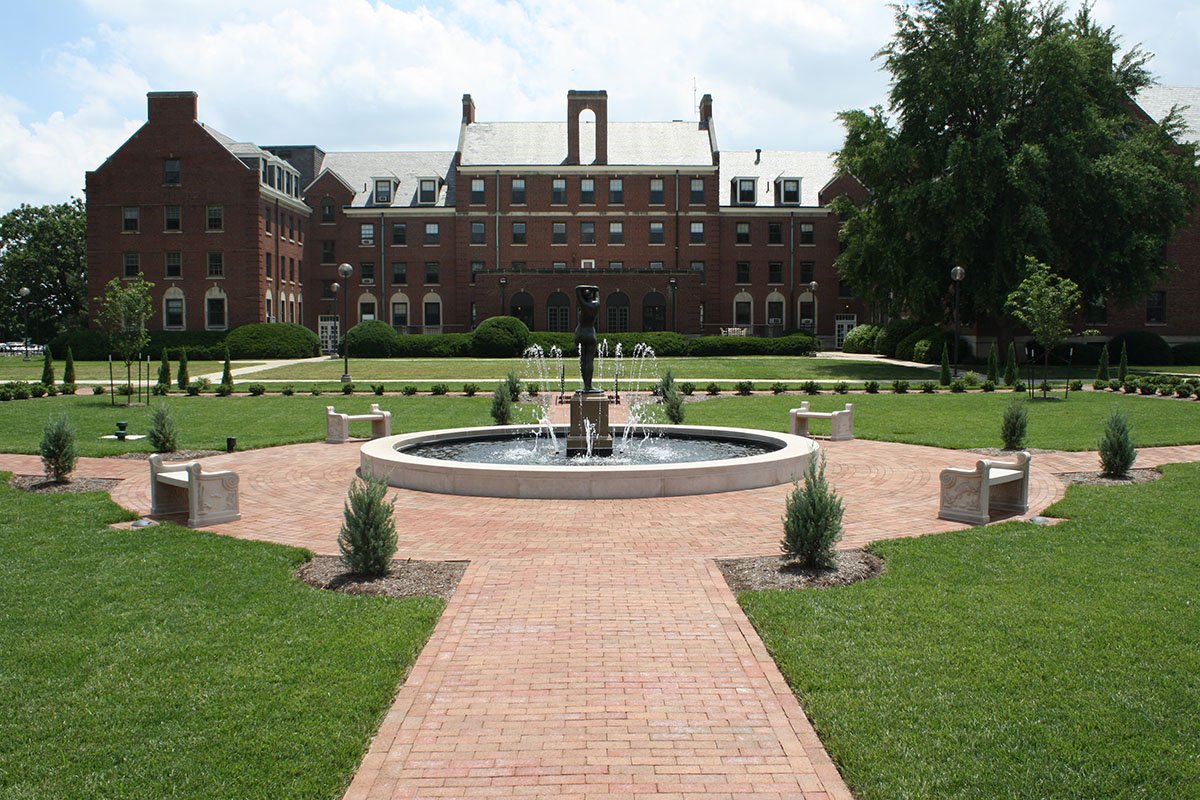31. Restoration of Ball Nurses’ Sunken Garden is Therapeutic Space for Hospital Campus
James Glass
Column that appeared in the Indianapolis Star onIn this year of the State’s bicentennial, Indiana University has restored a key part of its landscape heritage and provided welcome therapeutic benefits to patients, staff, and families of patients who come to its Indianapolis hospital campus. On June 21, the restored Ball Nurses’ Sunken Garden was re-dedicated by university officials and a crowd of over 200 people.
The history of the garden is part of the larger story of how a medical campus to care for patients around the state and to serve as a teaching institution for physicians and nurses was created. The campus was established in the early 20th century by Indiana University and the James Whitcomb Riley Memorial Association (now Riley Children’s Foundation). First came the Robert W. Long Hospital in 1914 for adult patients, then the first unit of the Riley Hospital for Children in 1924, followed by the William H. Coleman Hospital for Women in 1927. A critical need arose at that point for a residence to house the many nurses who would care for patients in all three hospitals. The Ball Family of Muncie stepped forward and donated $500,000 to build a handsome brick residence in the Georgian style for students of the I.U. School of Nursing. That building was completed in 1928, facing Michigan Street, just west of Coleman and Long Hospitals.
Hugh McKennan Landon, chairman of the board of the Riley Memorial Association, is credited with the idea of laying out a series of formal and picturesque gardens between the Ball Nurses’ Residence and the new Rotary Convalescent Home to the north. Landon suggested hiring the famed Olmsted Brothers landscape architecture firm of Brookline, Massachusetts to plan the gardens. Percival Gallagher of the firm had previously designed three gardens at Landon’s Oldfields estate (now part of the Indianapolis Museum of Art). Beginning in 1929, Gallagher designed a formal, sunken garden immediately north of the nurses’ residence, a convalescent garden beyond the sunken garden, and a forecourt garden immediately south of the Rotary Home.
The sunken garden was named in honor of the Ball Family and became a special place for generations of nursing students, where they unwound at the end of long days. Frequently, they rested on ornamental stone benches in front of the fountain at center. Above the fountain was the bronze statue Eve, created by Indianapolis sculptor Robert Davidson and commissioned by the Nursing School alumnae in 1931. Eve was re-named “Flo” by the students (after Florence Nightingale) and became a beloved figure which shared their lives and was the focal point for graduations, pinning ceremonies, and even engagements. Sometimes students let off steam by decorating Flo with towels, nightgowns, and bedpans.
In recent years, the Ball Garden deteriorated seriously. Fortunately, an indomitable group of alumnae from the Nursing School’s Class of 1959 became advocates for restoration of the garden, led by Ruth Rodefeld, Margaret McConnaha, and Audrey Corne. They met with Senior Associate University Architect Jerry Stuff, who envisioned that the Ball Garden and possibly the other Olmsted features could be restored.
This past year, I.U. President Michael McRobbie and new IUPUI Chancellor Nasser Paydar put their support behind restoration of the Ball Nurses’ Sunken Garden. At the dedication, McRobbie noted that the Ball Garden was the only remaining therapeutic garden in the United States designed by the Olmsted Brothers for an urban medical campus. Paydar described the garden as a key example of the university’s Welcoming Campus Initiative and observed that the history of the garden pointed to the power of such spaces to touch lives, forge lasting memories, and build a sense of community.
The restoration, carried out according to the original Gallagher plans by the I.U. University Architect’s Office and Rundell Ernstberger Associates, has brought back the symmetrical brick walks, fountain, carved limestone benches, shrubs and floral parterres of the 1930s.
Ruth Rodefeld, whose class restored the statue of Flo, paid tribute last week to the elegant bronze figure at the center: “She is the epitome of beauty and grace, which is prevalent in many caring nurses.”

Restored Ball Nurses’ Residence Garden, with Fountain and Statue of Flo, IUPUI campus, 2016. James Glass
